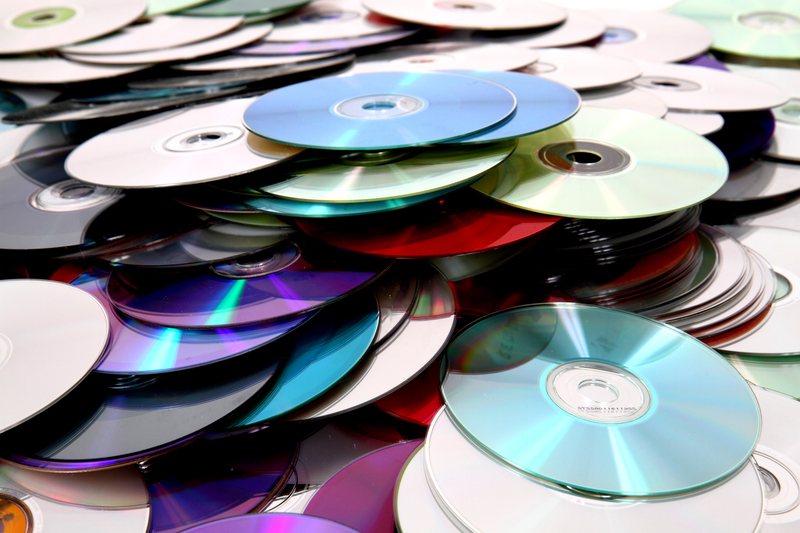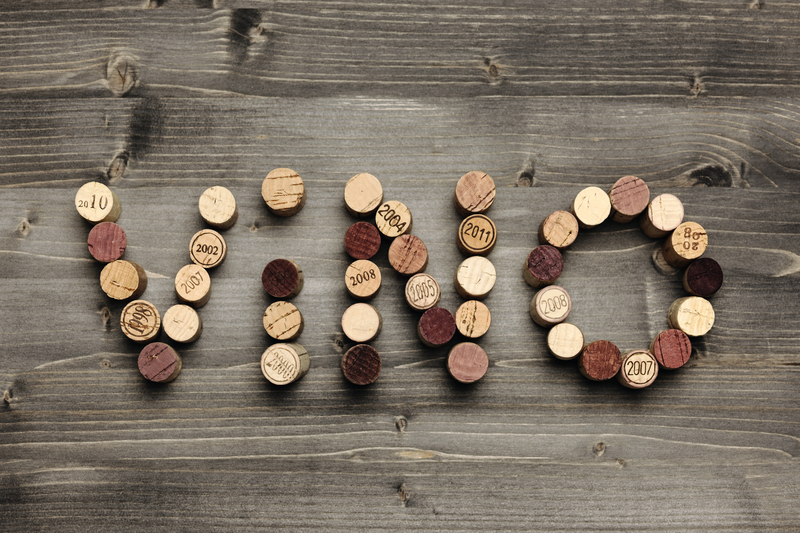Eco-Friendly Disposal Methods for Cookware: A Comprehensive Guide
In today's era of environmental consciousness, it's essential to consider the impact of disposing of everyday household items, like cookware. Cookware--including pots, pans, and baking dishes--often ends up in landfills, contributing to waste and pollution. By seeking out eco-friendly disposal methods for cookware, you can reduce your ecological footprint and even extend the life cycle of kitchen essentials. This article delves into sustainable strategies for discarding cookware, exploring recycling, upcycling, donation, and specialized disposal programs.

Why Is Eco-Friendly Cookware Disposal Important?
Every year, millions of tons of kitchenware--including non-stick pans, stainless steel pots, cast iron skillets, and ceramic baking trays--are thrown away. The improper disposal of these items poses significant environmental threats:
- Landfill Waste: Cookware materials do not decompose easily, leading to long-term waste accumulation.
- Resource Depletion: Discarded metal, glass, and ceramic cookware require new raw materials for replacements, increasing mining and manufacturing emissions.
- Chemical Leaching: Cookware with Teflon and other coatings may leach harmful substances if broken in landfills.
- Missed Opportunities: Many cookware materials are perfectly recyclable or reusable, offering valuable resources for new products.
Taking the time to choose a green cookware disposal method ensures you're helping both the environment and your community.
Can Cookware Be Recycled?
A frequent--and important--question is whether cookware can simply be placed in your household recycling bin. The answer varies based on material and local recycling capabilities:
- Stainless Steel & Aluminum: These are widely recyclable metals; however, cookware must often be delivered to a scrap metal facility rather than curbside collection due to their shape and weight.
- Cast Iron: Highly recyclable and valuable at scrap yards.
- Copper: Very recyclable, but sometimes worth more sold to metal collectors or repair shops.
- Non-Stick Cookware (e.g., Teflon): More complicated due to chemical coatings--check with local facilities as most standard curbside programs reject them.
- Enamel-Coated Pans & Ceramic: Not commonly accepted in traditional recycling streams. Specialized facilities or creative reuse are recommended.
- Glass Cookware: Tempered glass, used in bakeware, must be handled separately from glass bottles and jars as it melts at a different temperature.
Pro Tip: Contact your municipal recycling office or check their website for specific instructions about cookware.
Preparing Cookware for Recycling
Before taking your old pots and pans to a cookware recycling center, follow these essential preparation steps:
- Remove plastic handles, lids, or glass inserts--these are often not accepted with metal recycling.
- Scrub away as much food residue as possible. Clean cookware is more likely to be accepted.
- If you're recycling non-stick pans, consider calling ahead to inquire about their policies on chemical coatings.
- Group similar materials together to streamline the recycling process.
Finding Local Scrap Metal Facilities
Searching for a scrap metal recycling facility near you is simple--just type "scrap metal recycling <your city>" into your favorite search engine. Many of these centers accept cookware, sometimes even offering a small payment for the metal.
Donate Usable Cookware
Not all cookware needs to meet the end of its life in the recycling bin. If your pots, pans, or bakeware are in decent condition--free from cracks, major scratches, or peeling coatings--consider donating them. Organizations and individuals benefit from gently used cookware. Here's where to consider:
- Charities & Nonprofits: Organizations like Goodwill, Salvation Army, and local shelters often accept cookware donations.
- Community Centers: Schools, food banks, and community kitchens may need functional kitchenware.
- Refugee Resettlement Agencies: These organizations often assemble welcome kits for new arrivals, including essential housewares.
- Online Marketplaces: Sites like Freecycle, Facebook Marketplace, or Craigslist allow you to give away usable kitchen items to neighbors in need.
Important: Make sure donated cookware is thoroughly cleaned, free of lingering food residues, and safe for continued use.
Upcycling: Creative Reuse for Old Cookware
If you're feeling crafty, upcycling cookware is a fun, eco-friendly alternative to traditional disposal. Transforming your old pots and pans into something new both avoids landfill waste and adds creative flair to your home or garden. Here are innovative ways to repurpose cookware:
- Planters: Turn old cast iron skillets or saucepans into rustic garden planters. Add drainage holes for healthier plants.
- Wall Organizers: Hang frying pans on the wall to create unique utensil racks, key holders, or display art.
- Bird Feeders: Use old colanders or shallow casserole dishes as outdoor bird feeders or baths.
- Clocks and Mirrors: Transform a saucepan or cake tin into a quirky wall clock or mirror frame.
- Lid Art: Paint or mosaic pot lids for decorative wall hangings, trivets, or coasters.
- Storage Solutions: Old baking pans or muffin tins make ideal organizers for office supplies, jewelry, or garage hardware.
With a little imagination, upcycling gives old cookware a second chance at usefulness.
How to Dispose of Cookware with Non-Stick or Teflon Coatings Sustainably
Non-stick cookware--especially those coated with Teflon or PTFE--poses unique environmental challenges. Most curbside recycling programs don't accept these items due to the chemical coatings, which can emit harmful fumes or contaminate other recycled materials when heated.
Sustainable Teflon Pan Disposal Methods
- Locate a facility that accepts non-stick pans for specialized recycling. Some manufacturers offer mail-in take-back programs for their products.
- Remove the non-stick coating (if possible) before recycling as scrap metal. This is only advisable if you have access to professional services--don't try to sand off Teflon yourself due to the risk of inhaling toxic dust.
- If recycling isn't available, ensure safe landfill disposal by sealing the pan in a bag to prevent chipping. However, this is less eco-friendly and should be a last resort.
Whenever possible, choose eco-friendly cookware disposal options designed specifically for non-stick pans to protect the environment.
Manufacturer Take-Back and Mail-In Recycling Programs
Some progressive cookware companies recognize the need for responsible product end-of-life management. Several offer take-back or mail-in recycling options that support sustainable cookware disposal methods:
- GreenPan: Runs periodic recycling drives for non-stick cookware.
- Calphalon: May accept old aluminum cookware for recycling during special events.
- T-fal: Contact the company for information about their recycling initiatives.
- Local Retailers: Some stores, like Sur La Table, occasionally offer trade-in programs for old pots and pans.
Tip: Always verify participation and specific requirements on the manufacturer's official website before shipping your items.
Specialized Cookware Disposal Services
If standard recycling, upcycling, or donation aren't feasible, consider hiring or visiting a local eco-friendly cookware disposal specialist. Some waste management companies and environmental nonprofits run programs specifically for:
- Bulk metal and kitchenware disposal
- Hazardous material separation (for Teflon and other coatings)
- Glass and ceramic recycling or repurposing
Consult your city's sanitation department for recommendations, or check with Earth911 or similar green directories for specialized services.
How to Reduce Cookware Waste in the First Place
The greenest solution is often to avoid unnecessary disposal altogether. Here's how to minimize cookware waste:
- Purchase Quality: Invest in high-durability, repairable cookware made from materials like stainless steel or cast iron.
- Proper Care: Use the right utensils, avoid overheating, and follow maintenance instructions to extend cookware lifespan.
- Opt for Re-coating: Some companies offer restoration or re-coating services, especially for non-stick or ceramic cookware.
- Choose Modular Sets: Replace individual items instead of full sets to reduce waste.
- Borrow or Buy Secondhand: If you need additional pieces occasionally, consider renting or shopping at thrift stores.
Summary: Choosing the Right Eco-Conscious Cookware Disposal Route
In summary, eco-friendly disposal methods for cookware are plentiful, practical, and environmentally responsible. To recap, you can:
- Recycle metal cookware at a scrap yard or specialized recycling center.
- Donate usable pots, pans, and bakeware to charities or individuals in need.
- Upcycle old kitchen items into home or garden decor.
- Return select materials to manufacturers offering cookware recycling services.
- Properly dispose of tricky items--like non-stick pans or glass bakeware--using dedicated waste services.
Taking these steps not only helps the planet but can save you money and support your community. As awareness about sustainability grows, increasing numbers of manufacturers, retailers, and local governments are providing options for responsible cookware disposal. By acting thoughtfully, each of us can contribute to keeping kitchens--and our environment--free of unnecessary waste.

Frequently Asked Questions about Eco-Friendly Cookware Disposal
Can I put old pans in the recycling bin?
Most curbside recycling bins do not accept large cookware, but scrap metal yards usually do. Always check your local guidelines before placing cookware in any recycling bin.
What should I do with broken glass or ceramic bakeware?
Tempered glass (like Pyrex) and ceramics aren't accepted in regular glass recycling. Consider upcycling, or contact a recycling center about special acceptance.
How do I safely dispose of non-stick pans?
Locate a specialty recycling program for non-stick coated pans, or check if the original manufacturer offers a take-back service. Never put non-stick pans in a standard recycling bin unless permitted.
Are there any risks in upcycling cookware?
Always ensure containers used for planters or bird feeders are thoroughly cleaned, and avoid using items with flaking coating near food or in children's projects.
Conclusion: Embrace Green Habits in the Kitchen
Responsible, eco-friendly cookware disposal is a win-win: you help the environment, support those in need, and might gain a creative new home accent. Whether you recycle, donate, upcycle, or return your cookware to producers, your actions make a significant difference. Let's all cook up sustainability--one pot and pan at a time.